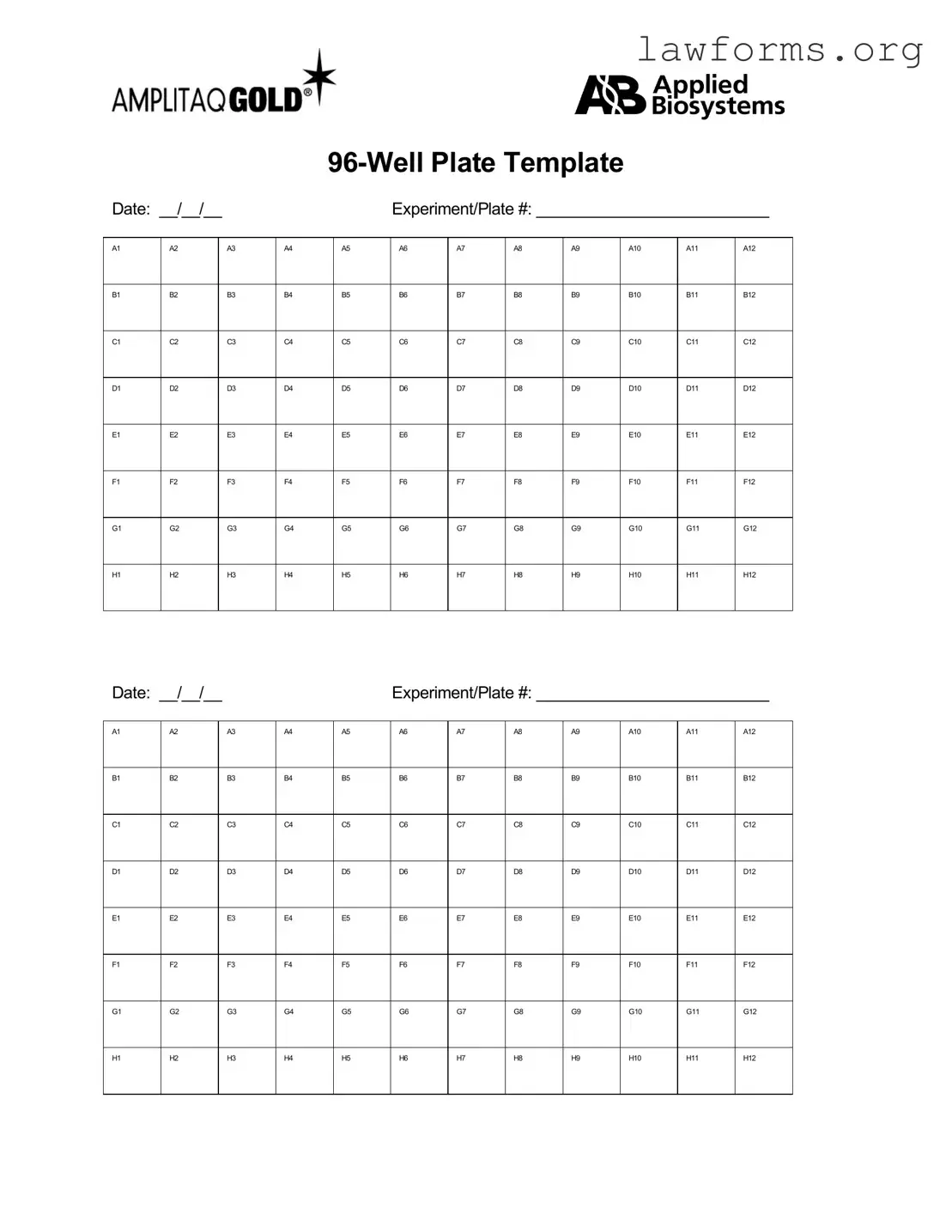When it comes to the 96 Well form, there are several misconceptions that can lead to confusion. Understanding these can help you navigate its use more effectively.
- Misconception 1: The 96 Well form is only for scientific research.
This form is often associated with laboratory settings, but it can also be used in various fields, including education and healthcare, for organizing data efficiently.
- Misconception 2: All 96 Well forms are the same.
While they share a standard layout, different versions may cater to specific needs, such as varying the type of data collected or the format of the results.
- Misconception 3: You must fill out every well in the form.
It is not necessary to use every well. You can leave some wells blank if they are not relevant to your data collection.
- Misconception 4: The 96 Well form is outdated.
Although it has been around for a while, the 96 Well form remains a popular choice due to its simplicity and versatility in data organization.
- Misconception 5: You need advanced software to use the 96 Well form.
This form can be filled out manually or with basic spreadsheet software, making it accessible for users with varying levels of technical expertise.
- Misconception 6: The form is only useful for quantitative data.
While it is excellent for numerical data, the 96 Well form can also accommodate qualitative data, allowing for a broader range of information collection.
- Misconception 7: You cannot modify the layout of the 96 Well form.
Users can adapt the layout to fit their specific needs, whether that means adjusting the number of wells or changing the labeling system.
- Misconception 8: The 96 Well form is only used in laboratories.
This form is versatile and can be applied in various settings, including classrooms, clinical trials, and even project management.

